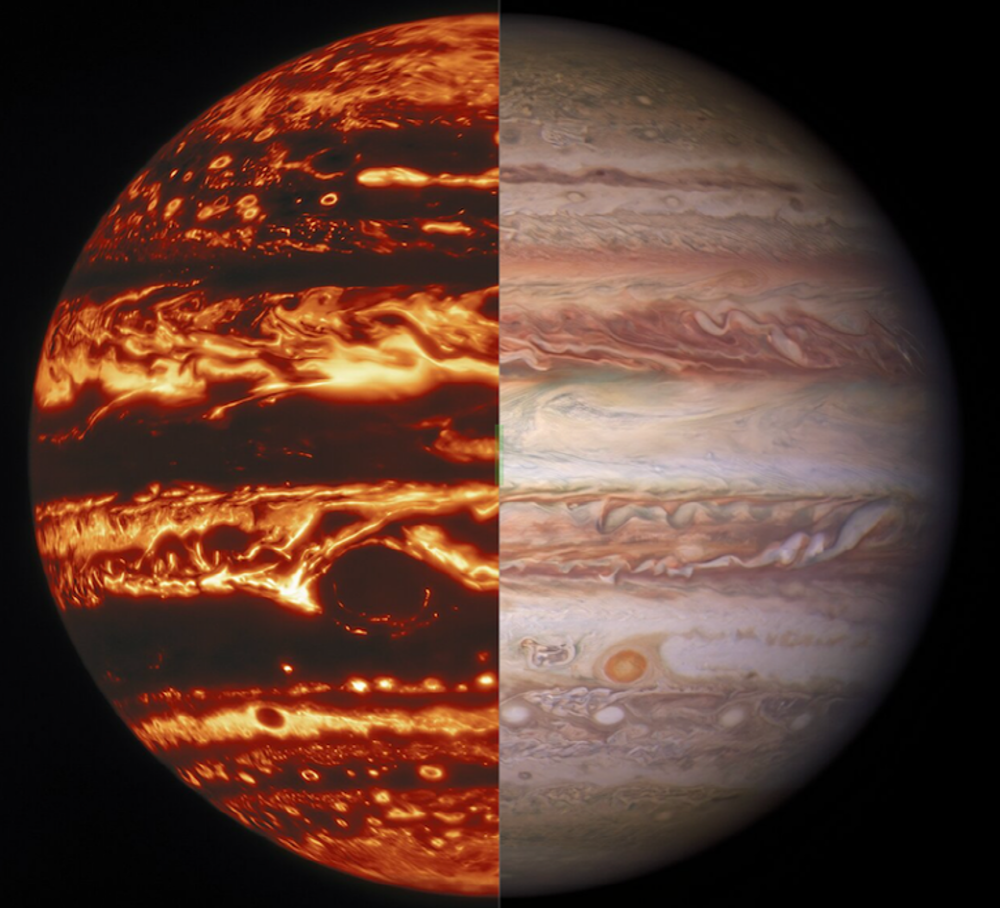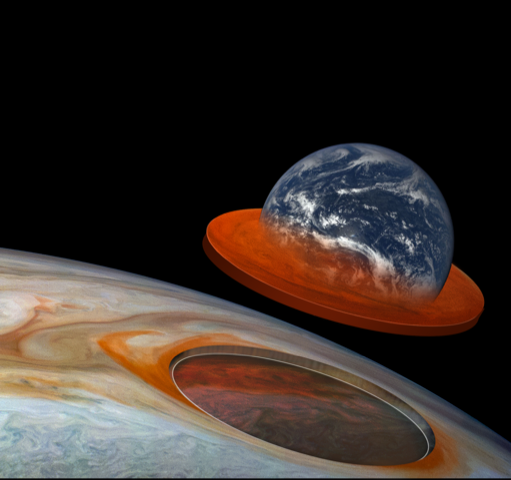
Observations from NASA’s Juno spacecraft orbiting Jupiter have revealed the characteristic internal structure of the Great Red Spot on the gas giant.
Juno entered Jupiter’s orbit in 2016 and has made 37 approach observations so far. Each time, a dedicated observation device came under the thick clouds of Jupiter. One of the instruments, the microwave radiometer MWR, can look under the clouds and examine the swirling storm structures.
Jupiter has countless swirls, but the biggest one is the Big Red Spot, not to mention. The huge high-pressure region discovered 200 years ago is large enough to fit the Earth. However, researchers do not know whether this is only visible on the surface of Jupiter’s atmosphere or continues deep into the thick atmosphere.

In this study, it is reported that Juno was able to understand the internal structure of the Great Red Spot fairly accurately from the data obtained. Juno measured the gravitational field to determine the depth of the Red Spot. Because the Great Red Spot is a huge storm, it is said that its depth can be measured by detecting the slight gravitational disturbances it creates.
As a result of analyzing the data obtained in this way, it is said that the depth is at least 300 km, and the depth is 500 km. Compared to the size of the surface that the Earth can fit on, it can be said that the depth of only 500 km is very shallow. However, if you say 500 km, it is much higher than the International Space Station when you say the altitude viewed from the Earth.
Knowing the depths of the Great Red Spot also creates new riddles. First of all, the depth of the Great Red Spot is shallow compared to the depth of 3,000 km of the surrounding jet stream, which is why. A NASA research team official believes that there are several phenomena per 500 km of depth, which weakens the Red Spot.
There is still much that is not known about what is happening deep in Jupiter’s atmosphere. Nevertheless, thanks to Juno observation, we were able to understand the entire picture of the Great Red Spot in much more detail than ever before. The research team said that some existing researchers thought that the Red Spot was only tens of kilometers deep. NASA originally planned to operate Juno until July 2021, but now it has changed to a plan to continue until 2025 at most. Related information can be found here.


















Add comment